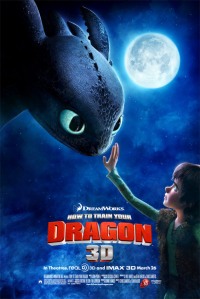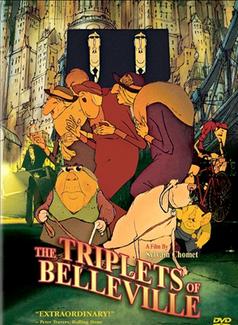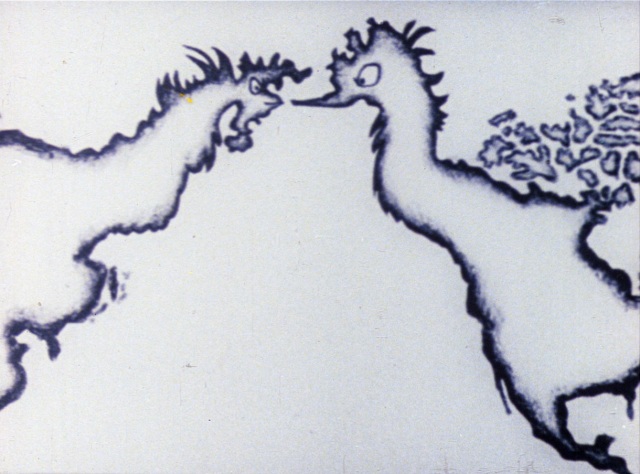 Join us for an evening with the creative talent behind DreamWorks Animation “How to Train Your Dragon.” Director / writer Dean DeBlois, producer Bonnie Arnold and development executive Chris Kuser will share their experiences in the development and production of this twice Academy Award(r) nominated 3D animated feature that has grossed approximately $500 million worldwide. The team is currently producing “How to Train Your Dragon 2,” set for release a 2014 release. The panel session will be moderated by Professor Jed Dannenbaum. Seating is very limited, so arrive early.
Join us for an evening with the creative talent behind DreamWorks Animation “How to Train Your Dragon.” Director / writer Dean DeBlois, producer Bonnie Arnold and development executive Chris Kuser will share their experiences in the development and production of this twice Academy Award(r) nominated 3D animated feature that has grossed approximately $500 million worldwide. The team is currently producing “How to Train Your Dragon 2,” set for release a 2014 release. The panel session will be moderated by Professor Jed Dannenbaum. Seating is very limited, so arrive early.
Bonnie Arnold, Producer
Bonnie Arnold is currently producing How to Train Your Dragon 2, the sequel to the Academy Award®-nominated original film from 2010, of which she also produced. An accomplished filmmaker in nearly every genre, she also a produced the Sony Pictures Classics release The Last Station, which garnered two Oscar® nominations as well as award nominations from the Screen Actors Guild; the Golden Globes; and the Independent Spirit Awards, including a nomination for Best Picture. In addition she produced the 2006 DreamWorks Animation release Over the Hedge, the Disney blockbuster Tarzan and the history-making film Toy Story, which combined have earned more than $1 billion in worldwide box office revenue.
Arnold’s previous production credits include a list of titles, among them the Oscar®-winning epic Western Dances with Wolves and the hit comedy The Addams Family. Arnold’s interest in journalism led to her first entertainment industry assignment as the unit publicist for American Playhouse’s debut production, King of America. Following that, she worked with several independent filmmakers via the American Film Institute and the Atlanta Independent Film and Video Festival. Her work in promoting independent films influenced her decision to pursue a career as a producer. Arnold is a member of the Academy of Motion Picture Arts and Sciences as well as the Producers Guild of America.
Dean DeBlois, Director / Writer
Canadian-born Dean DeBlois is a film director, screenwriter and animator who is equally at home in the worlds of live-action and feature animation filmmaking. Although already an accomplished animator and writer at the time “How to Train Your Dragon” became a worldwide hit, DeBlois is well known for co-writing and co-directing Walt Disney Animation Studios’ “Lilo & Stitch.” He later stepped behind the live-action camera to direct the indie critical darling “Heima,” which documents alternative/postrock band Sigur Rós’ series of free, unannounced concerts performed in their home country of Iceland. He also previously served as head of story on the Disney hit “Mulan.”
DeBlois once again collaborated with Chris Sanders (co-writer/co-director of “Lilo & Stitch”), to write and direct the 3D animated fantasy adventure comedy “How to Train Your Dragon” for DreamWorks Animation. He is currently in pre-production on the sequel to “How to Train Your Dragon;” he will write and direct the film. Dean is also set to write, produce and direct the live-action comedy “The Banshee and Finn Magee.” In addition, he has several live-action projects in development at Universal Studios and The Walt Disney Studio, on which he is serving as writer, director and producer.
DeBlois started his career at Hinton Animation Studios and worked as animator on the television series “The Raccoons.” He then joined Don Bluth’s, Sullivan Bluth Studios in Ireland and worked on the animated features “Thumbelina” and “A Troll in Central Park.”
Chris Kuser, Senior Development Executive
Chris Kuser is a Senior Development Executive at DreamWorks Animation. In January 2000 Chris began his career at DWA as an intern in the development department. He was promoted to Executive in January 2001. Movies he helped develop at DWA include: Shark Tale, Flushed Away, Kung Fu Panda, Monsters vs. Aliens, How to Train Your Dragon, Megamind, The Croods, and Mr. Peabody & Sherman. Chris earned an MFA in film producing at the American Film Institute in 2001. Prior to that, he was the Managing Director of the Contemporary American Theater Festival in Shepherdstown, WV, and an Executive Project Manager at Arena Stage in Washington, DC. Chris earned an MA in dramatic literature and criticism at Catholic University of America in 1994 and a BA in history at Fordham University in 1990. He is a former member of the acting company at Hedgerow Theater – a super-crunchy theater commune (true story!) – in Rose Valley, PA. Now he, his wife Mary, and their two children, Anna (8) and Teddy (5) live in Studio City.
![16472[1]](https://fall2011seminar.files.wordpress.com/2011/11/164721.jpg?w=640)
![16473[1]](https://fall2011seminar.files.wordpress.com/2011/11/164731.jpg?w=640)








